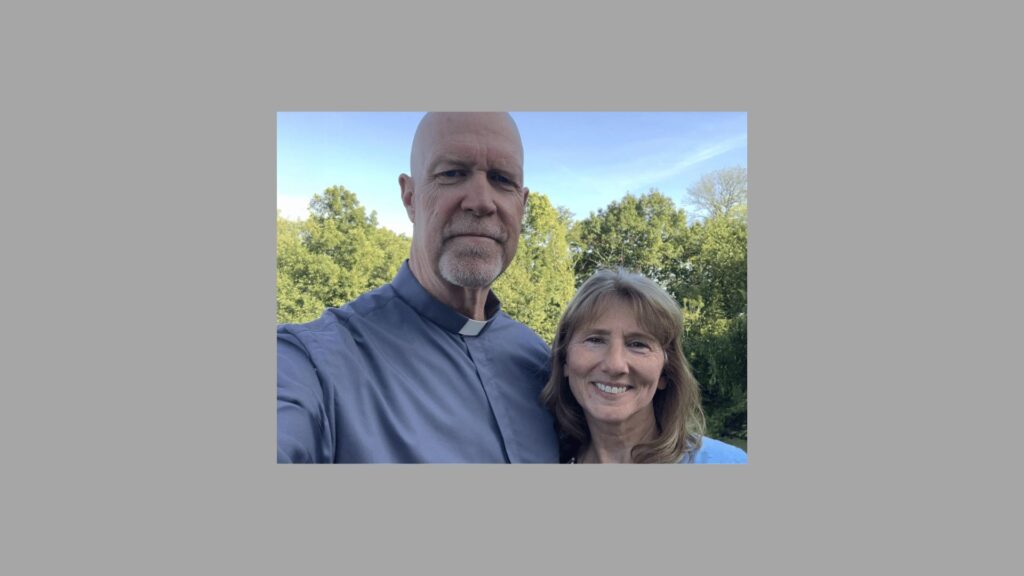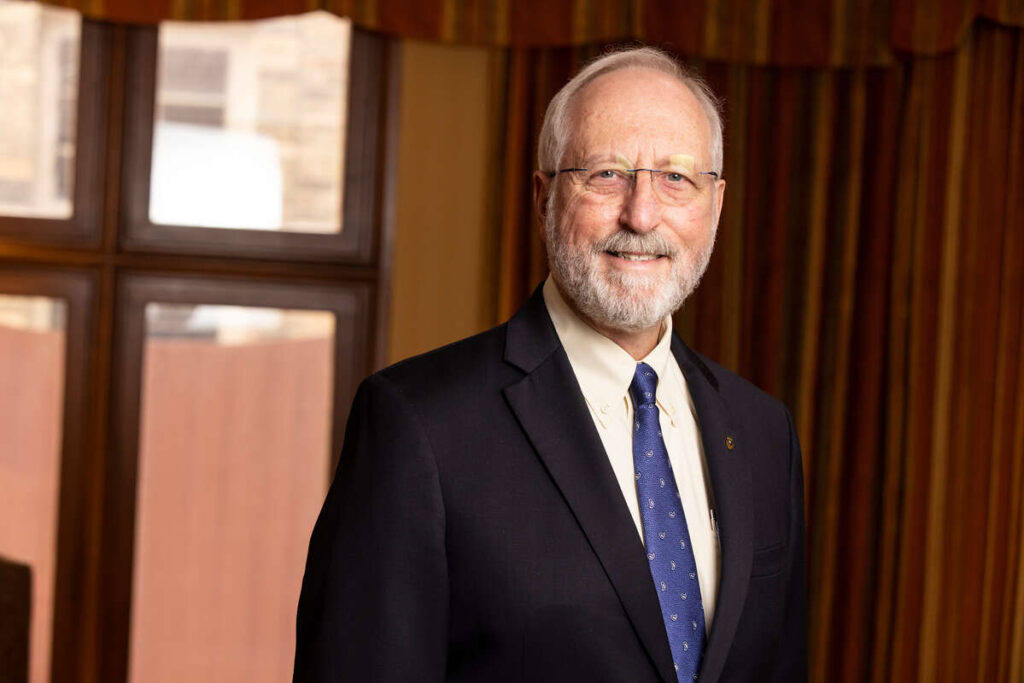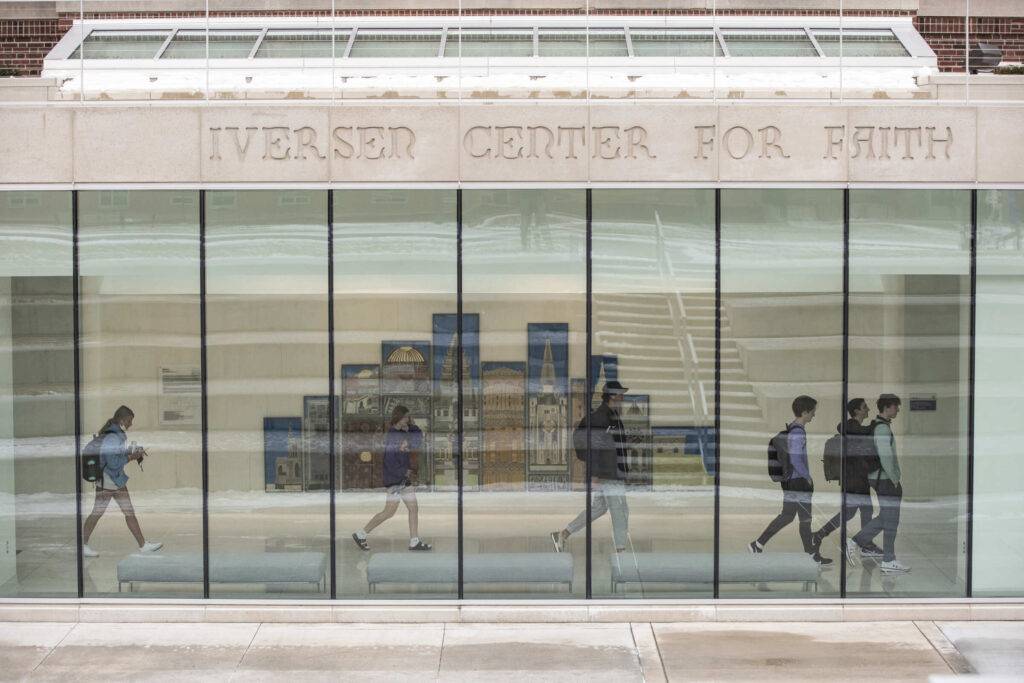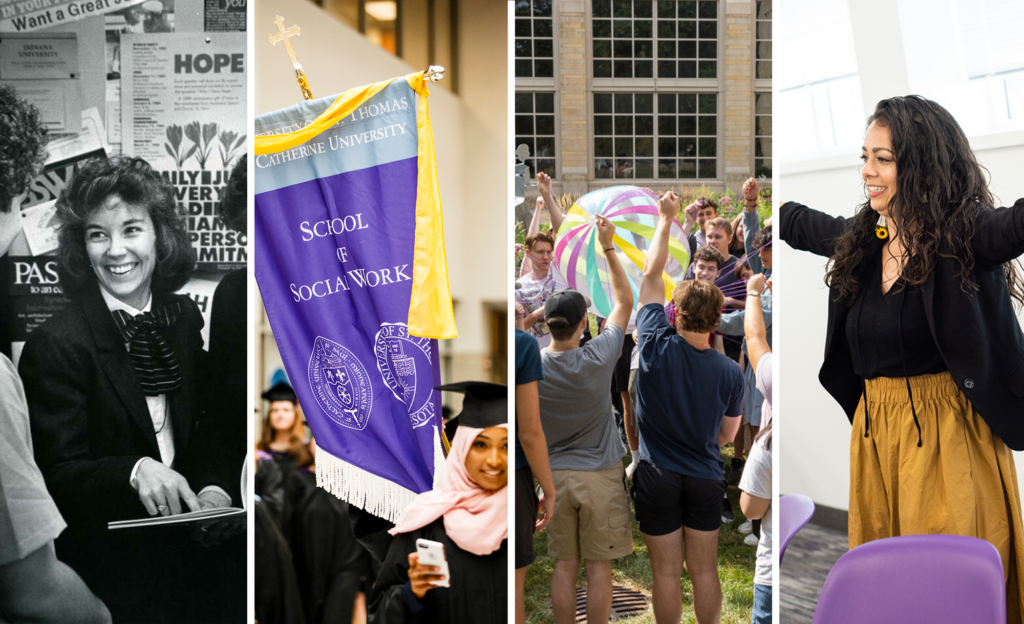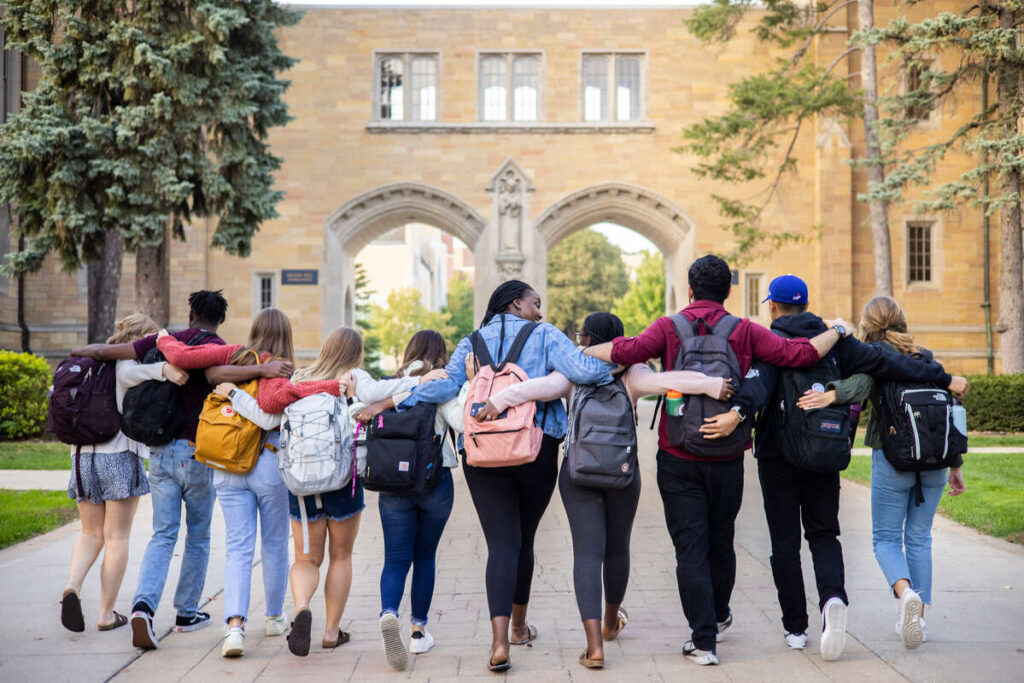"We relied on oral tradition, and that brings me here today," Bob Klanderud said to the standing-room-only crowd on the St. Thomas campus as he shared stories of culture, belief and modern-day realities of Dakota and Lakota people, particularly in Minnesota. To an audience that included undergraduates, community members and seminarians, Klanderud made what can seem to be a simple request: to listen.
It's a theme also at the core of the Encountering Religious and Cultural Traditions series being hosted by the Jay Phillips Center for Interfaith Learning this academic year. This session was co-sponsored by Justice and Peace Studies Department, the American Culture and Difference Program, and Students for Justice and Peace. Klanderud's talk was part six of eight, with remaining events focusing on Chinese traditions and Buddhism.
This yearlong series aims to foster religious literacy and inter-religious understanding by examining the world through the eyes of religious scholars and practitioners from various traditions. The presenters share their own lived experiences of these traditions and also address common stereotypes and misconceptions.
Klanderud, of Dakota and Lakota heritage, is enrolled with the Rosebud Sioux Tribe in Minnesota. He works with Healing Minnesota Stories (HMS), a project that works toward understanding and healing between Native American and non-Native people.
"Bob’s presentation packed the room full, which was wonderful," said Hans Gustafson, director of the Jay Phillips Center. "I strongly encourage all Minnesotans, young and old, to sign up for the Dakota Sacred Sites tour with him and Jim Bear Jacobs to get an even more powerful sense of the place we live in, and to hear the challenging stories about Native and non-Native encounter of the past and today."
Here are five observations from his talk.
Oral tradition connects community
With the opening quote, this observation likely comes as little surprise. One of the most important aspects of having an oral culture, Klanderud pointed out, was that shared stories and information connected the teller and the listener.
"With oral tradition, when young people needed to know how to plant these seeds, they would go to an elder and ask, 'Grandmother, how do I plant these seeds so I have food for my family?'" Klanderud said.
"And that elder might sit down and tell them, 'Well, those seeds, you need to plant in the dark of the moon in June, and that they'll be ready to harvest in 60 days, and you plant them like this. And you might plant those seeds around some corn and maybe some squash so those three things support one another.'
"That grandmother told that young lady how to raise food to sustain her life or her children. That young person respected that elder, maybe not even her own grandma. ... That old person respected that young person, so our community was kept strong by virtue of that respect."
Dakota people are a people of relationships
Early in his talk, Klanderud shared that Dakota can be translated to mean "ally people" or "brother people."
"We are a friendly people by our very name," he said.
In line with that, one of the important ceremonies of the Dakota people is to create relationships – an adoption ceremony where one may extend their family by adding another person as aunt, grandmother, father or nearly any other relation.
"When we take that person as a relation, they know they have an extended family," said Klanderud, speaking of the many family members he has added over the years and just how important they have been to him.
An important phrase in relation to that belief is Mitakuye Osain (all my relations). While this phrase indicates the interconnectedness of all human beings, it also reflects connections to the Earth and all other creatures.
"We take that concept to another level," Klanderud said. "All relations great and small, all creatures great and small, the Creator made. All creatures great and small have a purpose and a right to that existence."
Minnesota is a sacred space, in part because of its water
As part of HMS, Klanderud volunteers as a teacher by guiding groups to the sacred sites of Bdote, where Wakpa Tanka (Mississippi River) and Mnisota Wakpa (Minnesota River) come together. Central to Dakota origin stories, Bdote is understood to be the center of the Earth and the place where the Dakota people trace their beginning to. (It is believed to be the center of the Earth because Dakota people view the North American continent as Turtle Island, and Minnesota sits where the heart of the turtle would be.)
"All of us as citizens benefit from the beauty we have of the ... water of life," Klanderud said. "The 10,000 lakes we are known for is more valuable than gold. We have to take a position or stance that we live near one of the greatest rivers of Earth, the Mississippi, and we don't take care of it. We don't honor it the way we all should. ... It might help you stand in those places with a different feeling and know you're connected to that."
Narratives can be used as a form of oppression
Klanderud emphasized how negative narratives were used to make it acceptable to kill and displace Native peoples when Europeans arrived.
"First impressions make a lot of difference. If you're encountering an unknown people and you were told these terrible things about who we were, your preconceived ideas shape your image of who you are talking to," Klanderud said. "If they were preconditioned to think that we were hostile savages from the Devil himself and red skin and this and that, that is a negative connotation."
Importantly, he said, narratives are still being spun today about Native peoples that affect both Natives themselves as well as the perceptions non-Native people have of them. First, he pointed out that history surrounding who lived on these lands has been forgotten or suppressed.
"'The Dakota people moved to make room for the European settlers coming in. Wasn't that nice of them?' That's the common narrative that we believe, and we let it go," Klanderud said.
He said one of the first steps toward reconciliation is to acknowledge the spin of those narratives and to listen to Native people's truths of their own experiences. He added that these narratives continue to have a negative impact on Native peoples, who don't have access to their own history, which in turn perpetuates trauma and impacts self-esteem.
"I want to tell you a different story based on my understanding, because those narratives are those that keep our people repressed, with low self-esteem, not knowing who they are. At 65 years old, I'm standing here a miracle," Klanderud said.
The work of changing those narratives is helped along by diversity and faith
As part of HMS Klanderband helps promote stories as a way of healing. HMS is also a part of the St. Paul Interfaith Network, and, as such, believes faith communities have a large role to play in the healing work.
"We stand together in solidarity – laymen, clergy, rabbi, imam, priests, nuns, preachers," Klanderud said. "We stand together and bring that hope, that together we can bring beautiful diversity to the rest of the sick world and give them a model of standing together and working cooperation."

